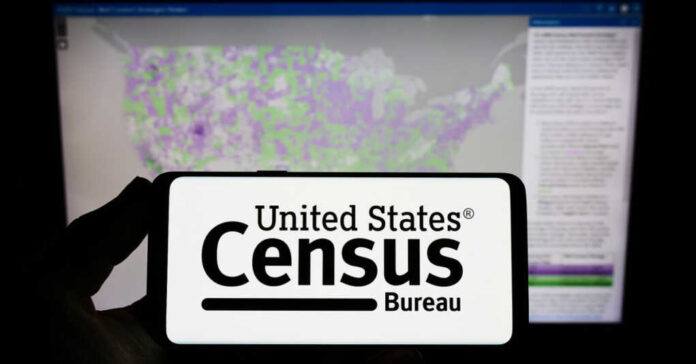
Democrats faced some unwelcome news over the Christmas break. The Census Bureau confirmed what Americans already knew – red states are attracting more residents, siphoning them away from blue states in record numbers. It’s a trend that may mark the end of the Democrat party’s reign of terror in Washington, D.C.
Florida, Idaho, Texas, and North and South Carolina are the top five states experiencing record growth, and each state voted for former President Donald Trump in 2016 and 2020. Utah and Tennessee, in the top ten fastest-growing states, supported Trump in both elections.
Democrats have a deep-south problem. With a growth of nearly 4 million people, southern states have contributed to almost all the population growth since 2020. Predictably, Florida and Texas hold the most significant share of the gains, accounting for around 70% of the shift during this time.
If the growth holds firm, it will affect future electoral maps. Texas and Florida, considered red states, would gain electoral votes, while California, New York, and Illinois, classified as blue states, would lose seats. Arizona, Georgia, and North Carolina would gain seats among battleground states, while Michigan and Pennsylvania would lose seats.
But Thomas Schaller, a University of Maryland-Baltimore County political scientist, quickly notes that Arizona and Georgia, red states that voted for Biden in 2020, may turn blue as more people of color move “back to their southern roots.”
Findings released by the Brennan Center for Justice support the theory that Blacks from northern states are migrating south, driven by factors such as age. Per the Center, younger individuals relocate for employment or education, and older individuals move for retirement. Educational levels influence this migration, as movers often have higher educational attainment. Racial and ethnic minorities, younger individuals, and those with higher education tend to lean Democratic. Population increases in many areas will likely be predominantly fueled by growth in communities of color.
Suppose Biden’s wins in Arizona and Georgia indicate that the states are flipping blue. In that case, Schaller predicts that the gains would be “sufficient to compensate for the reapportionment losses” from the shifting trends among other states.
But Rice University political scientist Mark P. Jones cautions that the population shifts should be concerning to Democrats. In perspective, comparisons to Biden’s 2020 election show an alarming narrowing of his margin of victory should the trend continue.
In the 2020 election, Biden won the electoral vote 306-232, but applying the population changes from the 2020 Census would have narrowed his victory to 303-235. If these changes persist until the next reapportionment in 2030, Biden’s victory would be further reduced to 291-247, indicating a 15-electoral-vote gain for Republicans based entirely on the projected shift in population.
But Democrats still have reason to hope. Michael Bitzer, a political scientist at North Carolina’s Catawba College, points out that individuals moving to red states from blue “lean Democratic.”
Additionally, it seems that the Democratic strategy of open borders is a winning one for liberals. Among the 43 states experiencing population growth, 13 would have had a decline in population if not for net international migration. However, it’s important to note that not all population growth from immigration necessarily favors Democrats. Immigrants can’t vote until they become citizens, which takes years. Additionally, there has been an incremental shift of Hispanics, a significant group among current-day immigrants, toward Republicans.
Some Democratic strategists are eyeing Texas and North Carolina as important states to flip to ensure future Democratic victories. Texas, with its significant rural voter population, has been traditionally Republican-leaning, but if it were to turn blue, it could permanently destroy Republicans’ chances to advance a conservative candidate. Texas has 44 electors, and it’s hard for candidates to win without the Lone Star State.
It’s a tough sell for Democrats to turn these historically red states blue. North Carolina only voted Democratic for president once in 1980, and the last time Texas turned out for a Democrat was 1976.
The biggest downside for Republicans is that Democrats are quick to flee the consequences their poor choices at the polls have created, but they aren’t likely to learn from their mistakes. Marjorie Taylor Greene (R-GA) had a brow-raising and highly controversial solution: withhold the vote from Democrats for five years after they move to a red state.
It’s hard to know if MTG seriously believes what she says, but it’s an interesting, albeit unconstitutional, concept. “You can live there, and you can work there, but you don’t get to bring the values that you basically created in the blue states you came from by voting for Democrat leaders and Democrat policies.”







